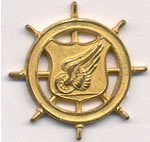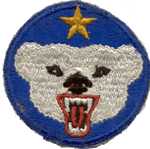World War II in the Aleutians - Shemya (APO 729)
January 26, 1943 to January 27, 1946
1. Recap of Army Facilities
Ft. Benjamine Harrison, Indiana
Ft. McClellan - Anniston, Alabama
Ft. Lawton - Seattle, Washington
4. Shemya
7. My Outfit
8. My Buddies
12. Potpourri
14. Coincidences
"With the attack on Pearl Harbor, the
in it's history. In March 1942, the transportation functions were consolidated into
the Transportation Division of the newly created Services of Supply. That same year,
on July 31 President Roosevelt established the Transportation Corps. By the end of
the war the Transportation Corps had moved more than 30 million soldiers within
the continental
overseas".
The Transportation Corps was divided into many different divisions, each one performing
diverse functions,each organized differently, each requiring special skills & expertise and
each having a different Table of Organization.

A Table of Organization is a listing of how many men are required for an outfit's
function, and the different ranks that would be required.
An example would be an Infantry Company. In those days it would be
composed of about 200 men.
There was usually four platoons of 48 men,each platoon broken down into
squads of 12 men each.
 Insignia - worn on dress uniform indicating the branch of service. Army Transport Service - Outport Unit - Harbor Craft Detachment |
The Table of Organization may have been composed of a Company Commander, a
Captain, Second in Command, a First Lieutenant, four Second Lieutenants - one for each
platoon, 4 sergeants and 4 corporals - one each for each platoon - and the rest Privates or
First Class Privates.
My new outfit, part of the Transportation Corps, was officially called the Army Transport
Service - Outport Unit - Harbor Craft Detachment.
|
|
Because our responsibilities were so diverse, depending
on the size of the harbor we
were servicing, the type of boats, docks, breakwaters, etc. a single Table
of
Organization would be meaningless. Since it was a new organization with little
history, one could say that it was a work in progress.

Because everyone either had a skill, or developed a skill,
we were
all NCO's, (non-commissioned officers)
ie. stripes with a T under
the chevron standing for "Technical".
Temporary & Permanent.
Those who were career Army men prior to the war, even if they
were promoted, would revert back to the rank they had when the
war ended. A person who held a
permanent rank could only be
demoted with a formal court-martial. With a few exceptions,
draftees or volunteers held temporary ranks and could possibly
retain the rank if they enlisted for another "hitch" after the
war.

